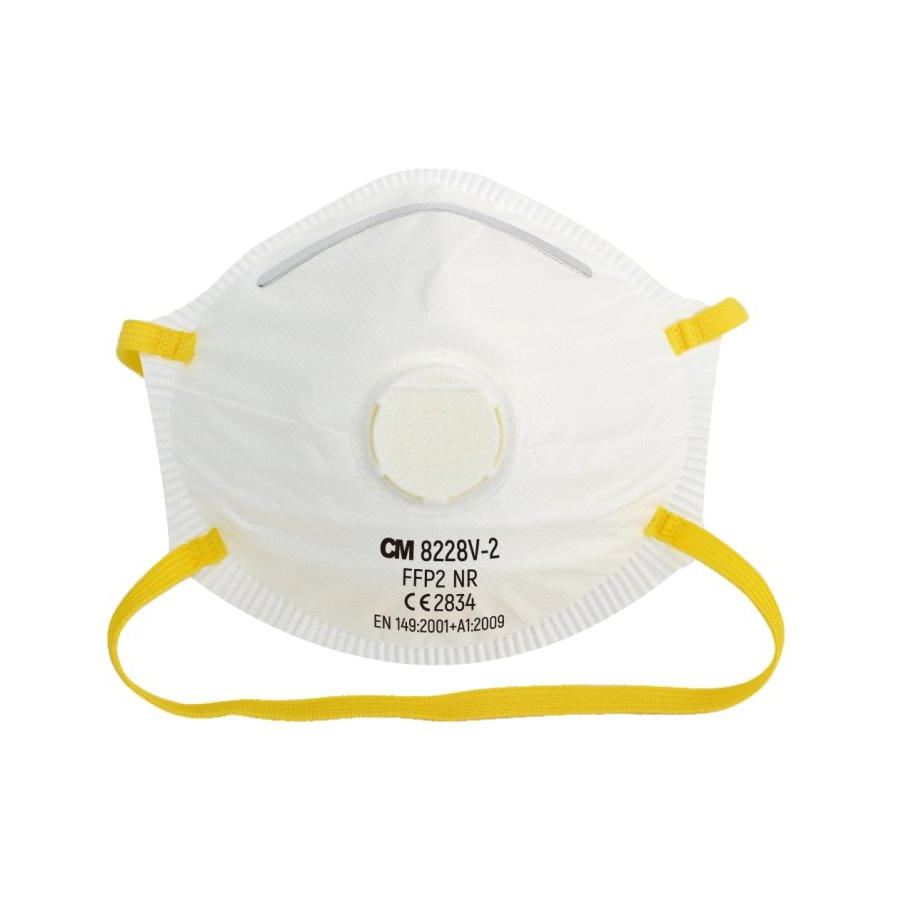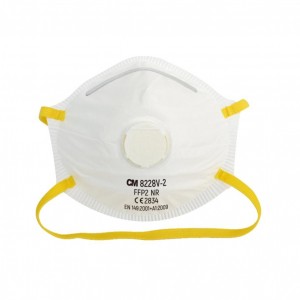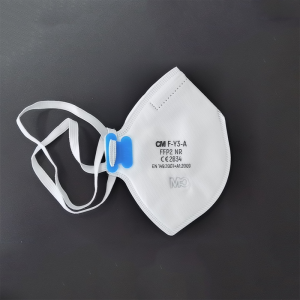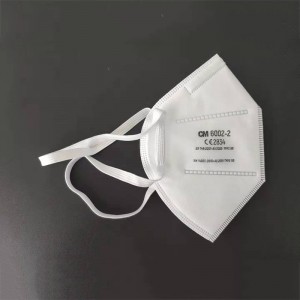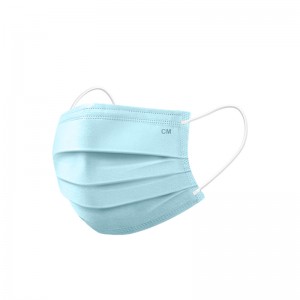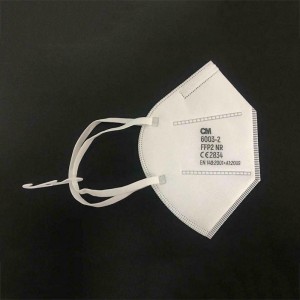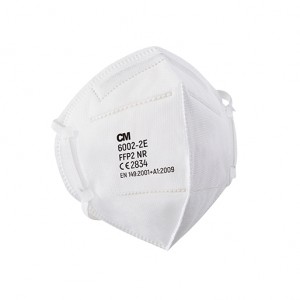
Particle filtering half mask (8228V-2 FFP2)
Material composition
The surface layer is 45g non-woven fabric. The second layer is 45g FFP2 filter material. The inner layer is 220g acupuncture cotton.

What are the benefits of masks with breathing valves?
The mask breathing valve is suitable for a relatively hot environment. It will be more breathable when exhaling, and the inhalation breathing valve will automatically close, which will not affect the use effect at all.
Compared with the ordinary face masks, the masks with breathing valves are more suitable for harsh use environment and more conducive to people’s breathing. In humid and hot working environment with poor ventilation or large amount of labor, using a mask with a breathing valve can help you feel more comfortable when exhaling.
The function principle of the breathing valve is that the positive pressure of the discharged gas blows the valve plate open when exhaling, so as to quickly eliminate the waste gas in the body and reduce the stuffy and hot feeling when using the mask. The negative pressure when inhaling will automatically close the valve to avoid inhaling pollutants from the external environment.
Face mask with acupuncture cotton
Acupuncture cotton is also called needle punch forming cotton in disposable dust face mask industry. Needle punched cotton for mask is a kind of mask material made by needling process. It is also called dust-proof mask after being combined with mask processing. Needle punched cotton for mask is a kind of filter material, which is made of polyester fiber by needle punching process. In the process of passing through this filter material, the respiratory dust will be adsorbed between the fibers, which play a role in preventing dust
Needle punched cotton masks are suitable for mining, construction, foundry, grinding and pharmaceutical industry, agriculture and horticulture, forestry and animal husbandry, subway engineering, aluminum operation, electronic and electrical equipment, instrument and instrument manufacturing, food processing industry, cement plant, textile plant, tool and hardware plant, sheet metal grinding, polishing, cutting, disassembly engineering, crushing operation. They can effectively prevent non-ferrous metals, heavy metals and other harmful pollutants, and block glass fiber Asbestos and other harmful substances.
Pressure differential is one of the testing methods to evaluate the mask.
Testing method – Pressure differential
The pressure differential, or pressure drop, reflects how easy it is to breathe through the filter material. The pressure differential is generally determined by measuring the air pressure on both sides of the filter material while air flows at a known velocity through the filter material. The pressure differential is the difference between the two air pressures. A low-pressure differential means air easily passes through the filter material, making it easier to breathe through. For a given experimental set-up, decreasing the air velocity will decrease the pressure differential and increasing the thickness of the filter material will increase the pressure differential.
The pressure differential is typically reported in the units of pascal (Pa) (1.0 Pa = 0.102 mmH2O). Some pressure differential standards for surgical masks use the unit of Pa/cm2, which has no physical meaning. These tests, however, specify the surface area of the mask material tested, so the values have been multiplied by the surface area tested to obtain a physically meaningful unit, Pa.
EN 149:2001
In Europe, filtering facepiece respirators must have the characteristics indicated by the EN 149:2001 (+ A1: 2009) standard, which mandates that these masks, among other things, must have specific characteristics of breathability, inward leakage, flammability, accumulation of CO2, etc. The EN 149:2001 (+ A1: 2009) standard requires that the filtering capacity of the masks be tested both with an aerosol of NaCl particles having a diameter distribution median between 0.06 and 0.10 μm and with an aerosol of particles of paraffin oil having a median diameter distribution between 0.29 and 0.45 μm; no bacterial filtration efficiency test is requested. Based on their filtering capacity, the filtering facepiece respirators are classified into type FFP1 (filtration capacity of NaCl aerosol and paraffin oil equal to 80%), FFP2 (filtration capacity of NaCl aerosol and paraffin oil equal to 94%) and FFP3 (filtration capacity of NaCl aerosol and paraffin oil equal to 99%).

